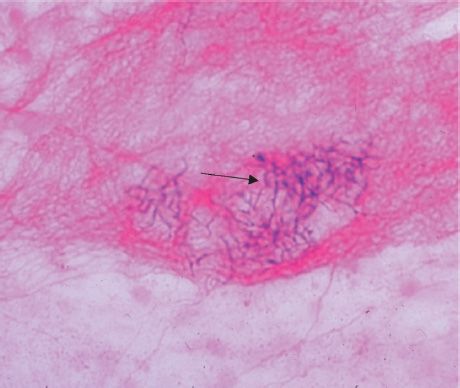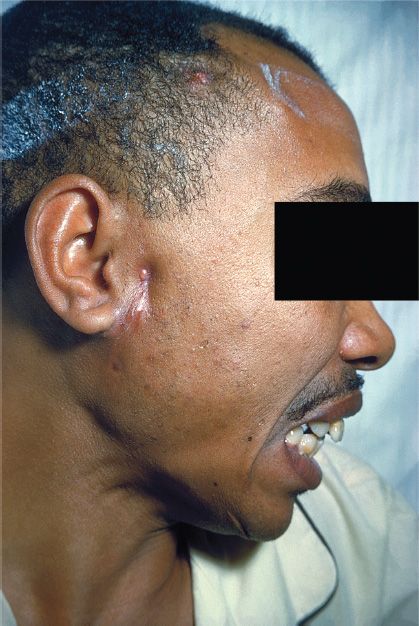22
Actinomycetes
CHAPTER CONTENTS
INTRODUCTION
Actinomycetes are a family of bacteria that form long, branching filaments that resemble the hyphae of fungi (Figure 22–1). They are gram-positive, but some (such as Nocardia asteroides) are also weakly acid-fast rods (Table 22–1).
FIGURE 22–1 Nocardia asteroides—Gram stain. Arrow points to area of filaments of gram-positive rods. (Figure courtesy of Dr. Thomas Sellers, Emory University, Centers for Disease Control and Prevention.)
ACTINOMYCES ISRAELII
Disease
A. israelii causes actinomycosis.
Important Properties & Pathogenesis
A. israelii is an anaerobe that forms part of the normal flora of the oral cavity. After local trauma such as a broken jaw or dental extraction, it may invade tissues, forming filaments surrounded by areas of inflammation.
Clinical Findings
The typical lesion of actinomycosis appears as a hard, nontender swelling that develops slowly and eventually drains pus through sinus tracts (Figure 22–2). Hard, yellow granules (sulfur granules) composed of a mass of filaments are formed in pus.
FIGURE 22–2 Actinomycosis. Note inflamed lesion with small sinus tract opening anterior to right ear. Yellowish “sulfur granule” can be seen at the opening. (Figure courtesy of Dr. Thomas F. Sellers, Public Health Image Library, Centers for Disease Control and Prevention.)
Stay updated, free articles. Join our Telegram channel

Full access? Get Clinical Tree





